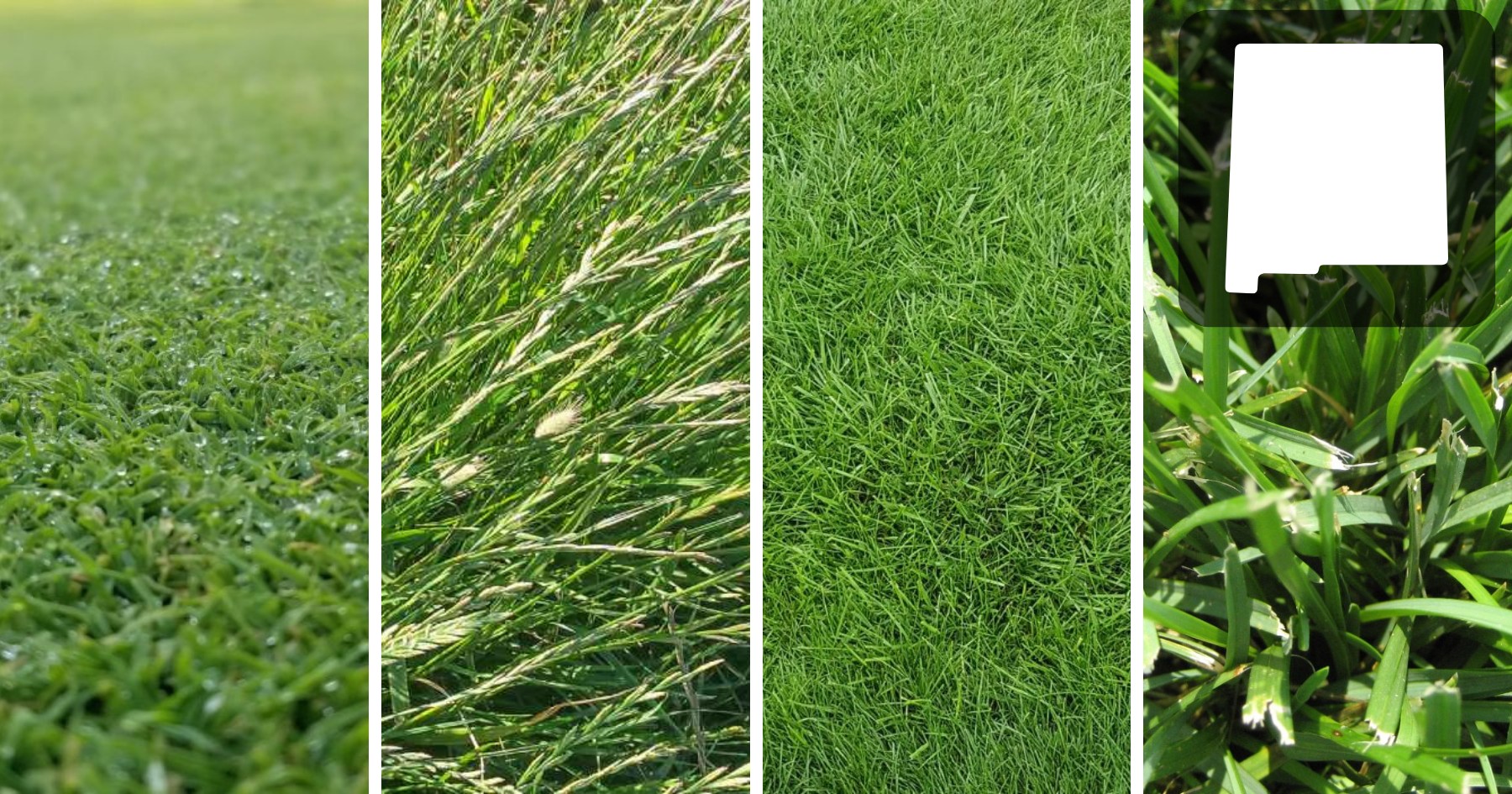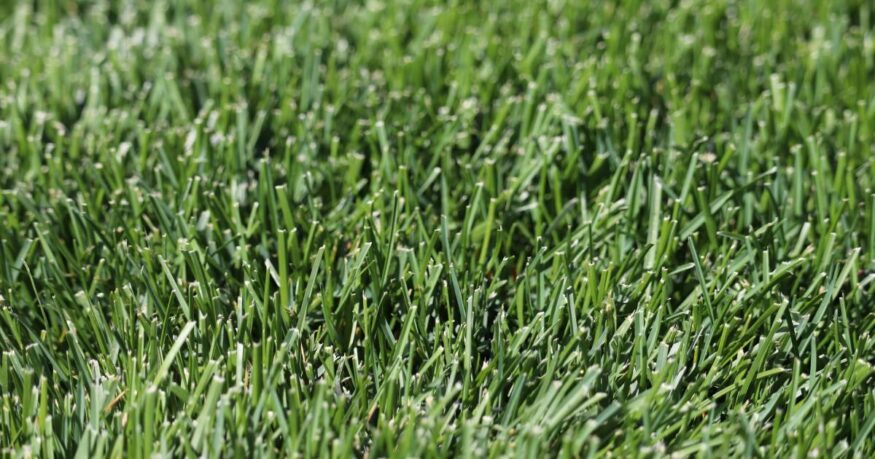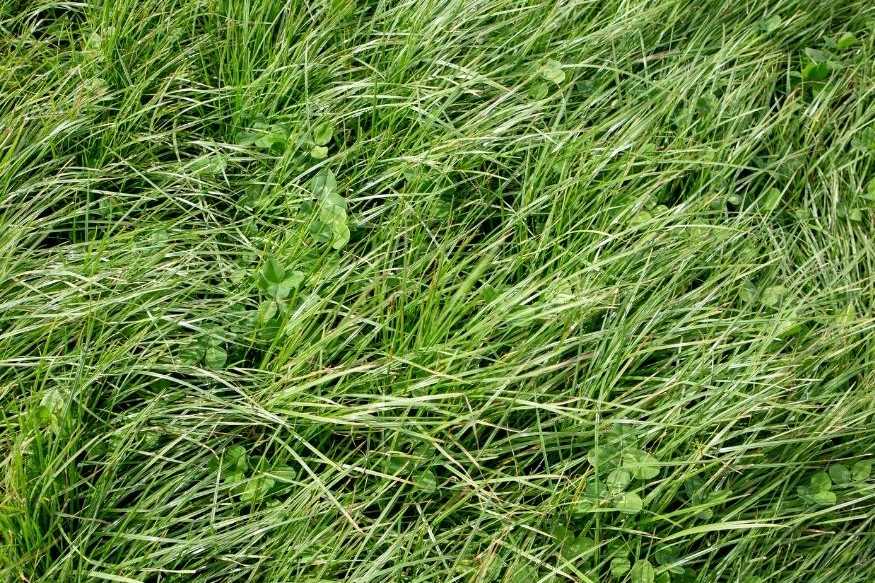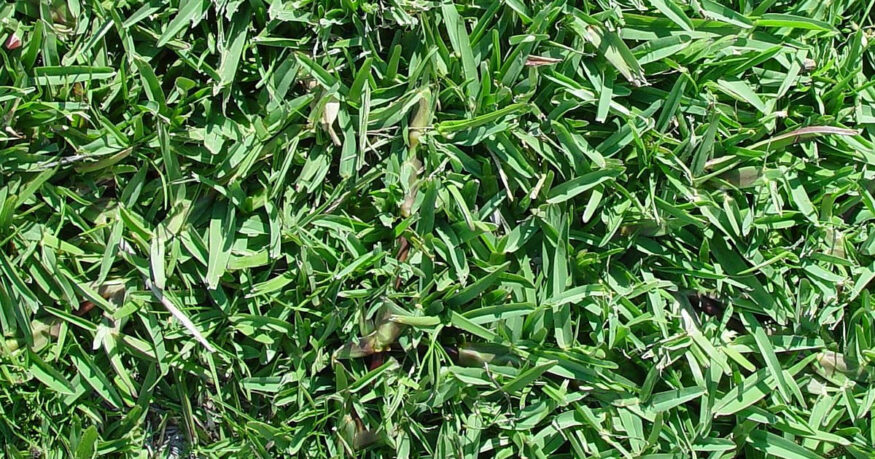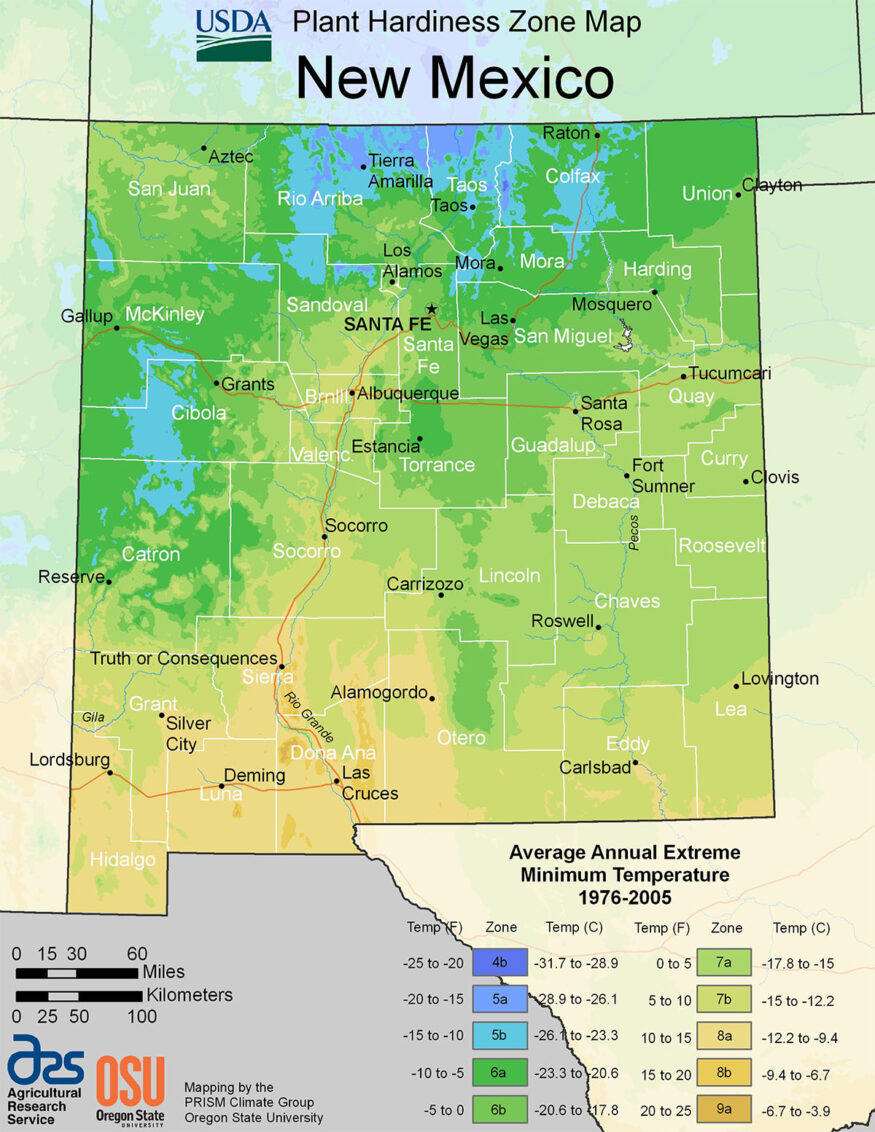Selecting the best grass seed for your New Mexico lawn can be a challenging task due to the state’s diverse climate and soil conditions. However, with proper research and understanding of the distinctive attributes of various grass seeds, it is possible to find a suitable option that will thrive in the Land of Enchantment.
By considering factors such as drought tolerance, foot traffic, and temperature variations, homeowners can opt for the best grass seeds to create an attractive and healthy turf.
Bentgrass
Why Bentgrass is The Most Popular Choice For New Mexico
Bentgrass is a cool-season grass that can be a great option for homeowners in New Mexico who are looking for a fine-textured, dense turfgrass. This grass type thrives in cooler climates and can tolerate moderate foot traffic, making it suitable for lawns and golf courses alike. Bentgrass also has a moderate shade tolerance, which can be beneficial for areas with partial shade in New Mexico.
There are, however, some challenges in growing bentgrass in New Mexico. Due to the state’s varied climate and wide range of temperatures, bentgrass may struggle in the hotter southern regions, where warm-season grasses like Bermudagrass, Buffalograss, and Zoysiagrass are more commonly found. To address this issue, consider selecting a bentgrass variety that is more heat-tolerant or blending it with other grass varieties that thrive in warmer temperatures, such as Kentucky bluegrass or ryegrass.
To sow bentgrass seeds:
- first prepare the soil by removing any debris and ensuring that it’s well-draining and rich in nutrients.
- Sow the seeds evenly, following the recommended seeding rate for the specific grass type (usually found on the seed packaging).
- Water the seeds gently but regularly, keeping the soil moist until germination occurs, which typically takes 10-14 days.
- Continue to water regularly, but be mindful of overwatering as this can lead to shallow root systems and reduced drought tolerance.
For ongoing care, mow bentgrass lawns at a height of 1.5 to 2 inches, and ensure that the mowing blades are sharp to prevent tearing the delicate grass blades. Fertilize and aerate the lawn regularly according to the grass’s needs, and monitor for any signs of pests or diseases that can be common in bentgrass.
Two recommended bentgrass seed options are:
Learn More: Read our comprehensive state-by-state grass selection guides here.
Kentucky Bluegrass
| Also Known As | Poa pratensis L. |
| Type of Grass | Cool season perennial |
| Optimal Zones | Northern cool season zone, transition zones |
| Root Structure | Shallow |
| Winter Hardiness | Excellent |
| Shade Tolerance | Poor to Good |
| Water Requirements | High |
| Drought Tolerance | Poor |
| Self Repair Capacity | Excellent |
| Overall Maintenance Requirements | High |
What Makes Kentucky Bluegrass A Great Grass For New Mexico
Kentucky Bluegrass is a popular choice for lawns in New Mexico due to its ability to handle various weather conditions and its dark green color which adds curb appeal. This cool-season grass is well-suited for areas with milder summers and adequate irrigation, making it an excellent option for homeowners in northern and higher-elevation areas of the state. However, it may struggle in extremely hot and dry regions.
One of the advantages of Kentucky Bluegrass is its fine blade texture, which creates a dense, lush lawn that can handle moderate foot traffic. Its self-repairing nature allows it to quickly recover from wear or damage. On the downside, this grass type requires regular maintenance, such as consistent watering and fertilization, to maintain its attractive appearance.
Planting Kentucky Bluegrass involves sowing grass seed during the fall or early spring when soil temperatures are between 50-65°F. Proper soil preparation, including aerating, is essential for successful establishment. Grass seed should be sown evenly at a rate of 2-3 pounds per 1000 square feet, followed by raking and watering to ensure good seed-to-soil contact.
Kentucky Bluegrass requires consistent care, including regular mowing to a height of 2-3 inches, and watering about 1 inch per week during the growing season. In addition to adequate water, this grass type benefits from nitrogen-rich fertilizers in spring and fall to promote healthy growth.
Two highly recommended Kentucky Bluegrass seed options available:
- Jonathan Green (11970) Blue Panther Kentucky Bluegrass Grass Seed
- SeedRanch Midnight Kentucky Bluegrass Seed (5 lbs.)
Looking for the best grass seed for your region?
Our smart lawn plans are designed to work perfectly with your local soil and climate conditions, without any of the toxic stuff.
Use the code EHG20 for an instant $20 discount!
- Personalized lawn care: Custom lawn plans based on soil analysis, climate data, and your specific lawn needs.
- Convenience with a conscience: Products that are not only easy to use but also safe for you, your pets, and the planet.
- Science-backed formulas: Bio-based formulas contain effective, natural ingredients like seaweed, molasses, and iron.
- Expert support: Get one-on-one guidance from a real person and rest easy with Sunday's satisfaction guarantee.
Perennial Ryegrass
Why Perennial Ryegrass Grows well in New Mexico
Perennial ryegrass is an excellent choice for New Mexico lawns due to its ability to adapt to the state’s climate. This cool-season perennial grass can handle the extreme heat of New Mexico’s summers, making it a suitable option for a healthy and vibrant lawn. It is particularly well-suited for areas with heavy clay soil, as it has deeper roots than Kentucky bluegrass, providing better stability and drought resistance.
Perennial ryegrass is known for its fine to medium textured leaf blades and rapid germination, making it an ideal choice for new lawns or overseeding existing lawns. Its good wear tolerance makes it suitable for high-traffic areas, providing a durable and attractive lawn option for homeowners.
In New Mexico, the best time for seeding perennial ryegrass is during the fall, which allows the grass to establish itself before the hot summer temperatures arrive. When sowing, ensure that the seed has good soil contact and maintain consistent moisture throughout the germination process. Once established, this grass requires regular mowing and moderate watering to maintain its lush appearance and strong growth.
Our Perrenial Ryegrass seed recommendations are:
- Pennington Smart Seed Perennial Ryegrass
- Greenview Fairway Formula Grass Seed Perennial Ryegrass Blend
Buffalograss
Why Buffalograss Is a Popular Grass seed Choice
Buffalograss is a native grass that is well-suited for New Mexico’s diverse climate and landscape. This warm-season grass is known for its drought tolerance and low water requirements, making it an excellent choice for homeowners looking to maintain a lush lawn with minimal water usage. This grass thrives in the dry conditions that are predominant in many parts of New Mexico.
Buffalograss has a low growth habit, which helps reduce mowing frequency. However, it may not tolerate high foot traffic as well as some other grass types. Its shade tolerance is also moderate, meaning it grows best in areas with adequate sunlight.
When it comes to planting buffalograss, homeowners should generally sow seeds in late spring or early summer, when soil temperatures are consistently above 60°F. It is essential to prepare the soil by removing any debris, loosening the top layer, and raking it smooth before seeding. Buffalograss should be watered more frequently during the establishment phase, but once established, it can survive on minimal water, making it a great choice for water-conscious landscapes.
Two highly recommended buffalograss seed options available:
- Outsidepride Buffalo Warm Season, Drought Tolerant, Slow Growing, Lawn, Turf, Xeriscape Grass Seed
- Dibbs Farms Buffalo Grass Seed
New Mexico’s Climate And Growing Challenges For Lawns
New Mexico offers a unique set of challenges for homeowners looking to grow and maintain a healthy, beautiful lawn. This section discusses the primary factors to consider when selecting the best grass seed for the New Mexico climate, as well as how to sow and care for that specific grass type.
Climate
The climate of New Mexico is quite varied, due to its range in elevation and unique location in the southwestern United States. Generally, the state is characterized by low humidity, dry air, and widely fluctuating day and night temperatures. Depending on the area, grasses need to be able to withstand periods of extreme heat, cool nights, and limited water resources.
Soil Conditions
The soil in New Mexico is predominantly composed of clay, sand, and caliche (a calcium carbonate-rich material). Due to these varying soil types, selecting a grass seed with adaptive root systems is crucial. For instance, ryegrass thrives in clay-heavy soil, while bermudagrass prefers sandy or loamy soils.
Weeds, Pests & Diseases
New Mexico lawns must contend with persistent weed growth, such as foxtail grass, which can be detrimental to pets and lawns alike. Cheatgrass is another nuisance in New Mexico, as its barbed seeds can cause damage to both your lawn and animals.
Lawn pests and diseases are also a challenge in New Mexico, making it crucial to choose a grass type that is resistant to these threats. Native grasses like blue grama can provide a more resilient option in the fight against pests and diseases, as they are naturally adapted to the state’s climate and conditions.
Other Challenges
New Mexico’s lawns face additional challenges, such as maintaining adequate water levels in an area prone to drought. Choosing a grass type that is drought-tolerant while still providing a lush, green appearance is essential.
Foot traffic and wear tolerance should also be taken into consideration, as families and pets typically utilize lawns for outdoor activities. Grasses like zoysiagrass and ryegrass provide moderate wear tolerance in high traffic areas.
Looking for the best grass seed for your region?
Our smart lawn plans are designed to work perfectly with your local soil and climate conditions, without any of the toxic stuff.
Use the code EHG20 for an instant $20 discount!
- Personalized lawn care: Custom lawn plans based on soil analysis, climate data, and your specific lawn needs.
- Convenience with a conscience: Products that are not only easy to use but also safe for you, your pets, and the planet.
- Science-backed formulas: Bio-based formulas contain effective, natural ingredients like seaweed, molasses, and iron.
- Expert support: Get one-on-one guidance from a real person and rest easy with Sunday's satisfaction guarantee.
